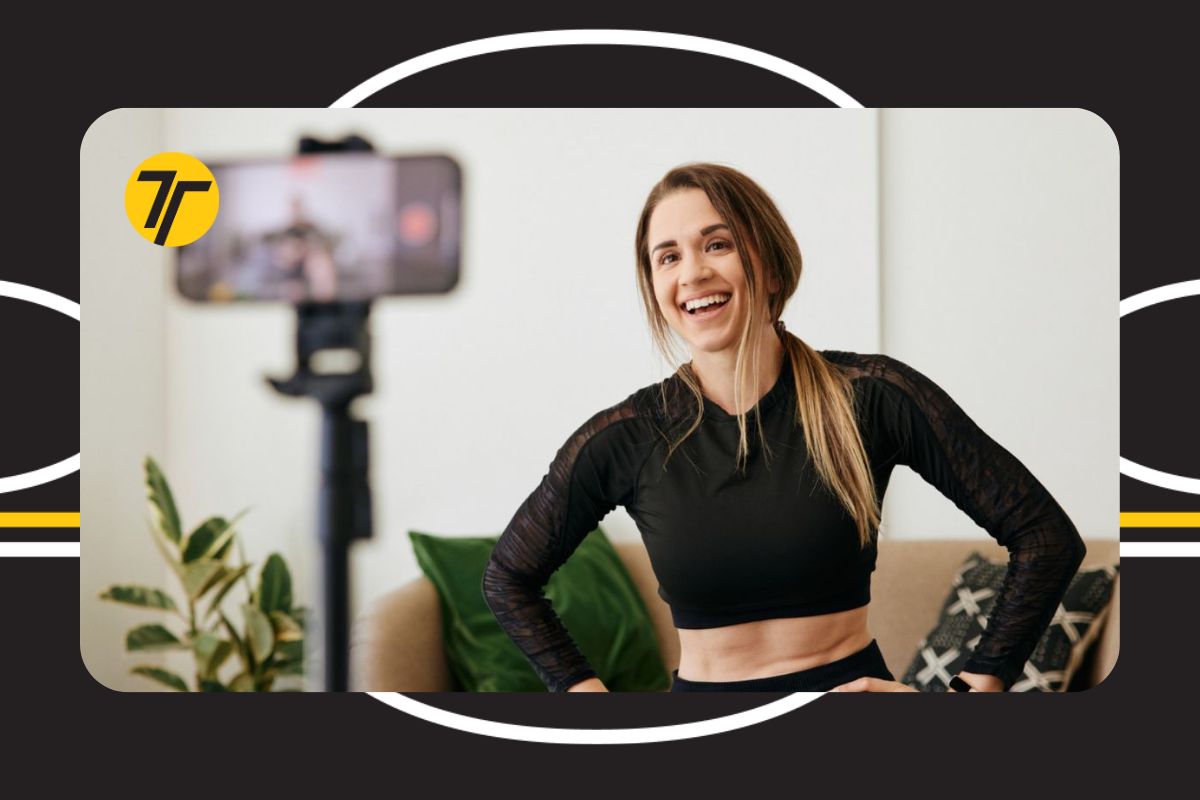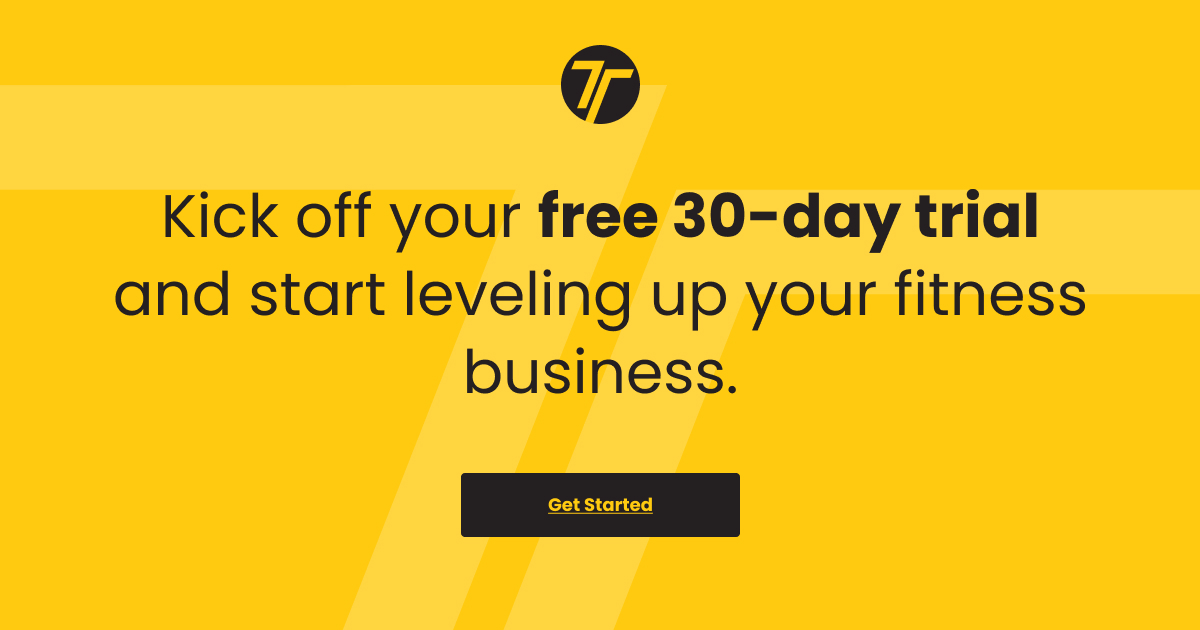
On July 10, 2025, Instagram announced that public content from professional accounts will now be automatically indexed by Google and other search engines, making your posts more discoverable than ever.
And with one in three people discovering brands and products through social media, it’s clear that these platforms are steadily gaining ground over traditional search engines and paid ads.
Think of social media as your virtual shopfront, one that’s free, requires no rent, and gives you access to thousands of people inside your community, plus the ability to reach thousands more in a limitless global marketplace.
In this article, we’ll show you how to make the most of each platform, leverage the latest tools, and build a fitness brand that thrives in this ever-expanding digital space.
📝 Check Out: Top Social Media Trends for Fitness Pros in 2025
4 Most Used Social Media Platforms for Fitness Brands in 2025
Choosing the right channel begins with knowing who’s there and what each platform does best. Use this quick rundown to align your fitness content strategy with the right audience.
#1: Instagram
Instagram combines fitness brand visibility on social media, social proof, and instant purchase in one place, making it the go-to platform for converting engaged followers into paying clients and product buyers.
According to Instagram, over 130 million users tap on shopping posts every month, thanks to its seamless social commerce for fitness and in-app checkout feature. We can now complete a full purchase without ever leaving the app, which cuts down drop-off points and boosts conversions for brands.
This is critical because people don’t want their journey interrupted. They want to keep scrolling without switching to a browser when everything they need is already on Instagram.
Here are the latest statistics on Instagram:
- Monthly active users: about 2 billion
- Main demographic: roughly 62 percent are ages 18 to 34
Novelty in the Instagram world:
- Product tagging everywhere: You can add shoppable tags to Feed posts, Stories, and Reels so followers can tap straight to a product page, ideal for selling workout plans or branded merch
- Profile Shop tab: A customizable storefront lives right on your profile, turning Instagram into a 24/7 virtual shopfront, no extra website required
- Creator-collab sales: Paid-partnership and Collabs tags let influencers co-sign your programs, making leveraging influencers in fitness marketing seamless
- Search-engine boost: From July 10 2025, public posts from professional accounts are indexed by Google and Bing, giving every shoppable Reel or photo a second discovery channel
📝 Read More: The Ultimate Guide to Instagram Marketing for Fitness Professionals
#2: YouTube
YouTube is ideal for building trust and establishing long-form authority, making it essential for fitness coaches who want to create a comprehensive brand experience. It works well for those who prefer longer formats, whether educational, personal, or entertaining.
With about 2.5 billion monthly active users, it reaches everyone. And now, with Shorts, it also delivers on short-form trends, helping you stay relevant and discoverable.
In the last few years, Shorts have also made YouTube a serious player in short-form, attracting on average 110 times more views than regular videos from the same channels.
With YouTube, you get the best of both: depth for those who are ready to commit, and quick hits for everyone scrolling by.
Here are the latest statistics on YouTube:
- Monthly active users: about 2.5 billion
- Main demographic: roughly 60 percent are ages 18 to 34
Novelty in the YouTube world:
- Playlists & Chapters: Turn your content into an organized, easy-to-digest series. Viewers stay longer, and search visibility improves.
- Search-first discoverability: YouTube remains unmatched when it comes to appearing in search results, making it ideal for those who want to establish their niche with authority.
📝 Check Out: The Most Popular Fitness YouTubers in 2025
#3: Facebook
Facebook has nearly 3 billion monthly users and the highest adoption rate in the 25–44 age group. Far from being dead, and with a growing user base, the first social media platform is now being used for private Groups, live workouts, and promoting events, especially by local gyms and hybrid coaches.
Overall, for fitness brands, Facebook has shifted from public feed posts to more meaningful, private interactions. Groups, Messenger, and live sessions are where your audience now spends their time.
Here are the latest statistics on Facebook:
- Monthly active users: about 3 billion
- Main demographic: strongest in the 25–44 range
Novelty in the Facebook world:
- Community-first engagement: People prefer interacting in Groups or via Messenger over liking random posts. Trainers use this to build loyalty, encourage referrals, and maintain accountability.
- Meta ecosystem integration: Facebook syncs seamlessly with Instagram and WhatsApp, making ads, retargeting, and omnichannel touchpoints easy to manage.
- Events & Lives: Features like Events and Live remain effective for local challenges, open houses, or global Q&As, helping you connect in real time.
#4: TikTok
If I want a quick bodyweight or resistance band exercise, I go on TikTok and type it out. It’s guaranteed that you’ll find a good one in less than 10 seconds. And I am not alone in this.
TikTok has become the go-to platform for quick, clear fitness answers, whether it’s a 30-second plank challenge, a mobility drill, or a step-by-step deadlift tutorial. Its search bar outperforms Instagram’s (even though Instagram has improved), making it perfect for demo workouts and fitness tips that solve real problems fast.
For coaches who want to reach a global audience quickly and in a space that still feels less saturated and more discoverable, TikTok is the ideal platform. Its algorithm favors actionable, relatable content and rewards those who show up consistently.
Here are the latest statistics on TikTok:
- Monthly active users: about 1.6 billion
- Main demographic: 18–34 years old: 67%
Why TikTok Keeps Gaining Ground
TikTok’s rise can be attributed to how well it’s designed for both users and creators. The full-screen, vertical video format, smooth swipe feed, and ultra-fast loading keep people watching, an average of 95 minutes a day.
The hyper-personalized For You Page learns what viewers like incredibly fast, meaning even niche #fitness content can reach the right audience within hours.
TikTok is still considered to have the best algorithm, going beyond simple keyword matching. It analyzes captions, hashtags, on-screen text, spoken words, sounds, and engagement metrics to deliver highly relevant and personalized results.
Users have caught up on it because it uniquely blends scrolling and search. So they often move fluidly between passive browsing and active searching, especially with the discoverable keywords in the comment section.
For creators, everything you need is already built in. Trending sounds, text overlays, and editing tools make it easy to shoot, cut, and publish workouts without professional gear.
The platform also delivers unmatched organic reach, with accounts under 100k followers seeing engagement rates around 9%, the highest of any major social platform.
And the fitness audience is already there: hashtags like #fitness have billions of views, making discovery almost friction-free for new coaches.
📝 Read More: Ultimate Guide to TikTok for Fitness
What to Post on Social Media in 2025 as a Fitness Pro
- Training Content = Edu-Tainment Content
We’re in the edutainment era; all posts must teach something useful while keeping people entertained enough to stick around and share.
Start with simple, clear concepts: demonstrate a hip hinge, bust a fat-loss myth, or film a single-exercise demo. Keep it short, under 30 seconds. If it gains traction, consider expanding it into a longer YouTube tutorial or series, or a digital product.
- Quick Workout Demos & Global Challenges
Short, single-exercise demos and mini-circuits tied to trending hashtags are effective for increasing visibility. Challenges like #30DayFlexibility or #PlankChallenge allow your followers to join a larger conversation while showcasing their progress.
Add your quirky skills, or drills, people love trying new things. End with a clear call-to-action to drive interaction.
Discover: How to Sell Challenges and Add Multiple Clients
- Myth-Busting Micro-Lessons
One of the most shareable formats is debunking common fitness myths. Use carousels or Shorts to break down one misconception at a time, such as “Sweating ≠ fat loss,” and open with a hook that sparks curiosity. Wrap it up with a quick, actionable takeaway that they can try today.
- User-Generated Proof
Nothing builds credibility like your own clients’ stories. Repost PR videos, transformation pics, or tagged Stories from your audience, and create a branded hashtag so they can share their wins.
Reward the best post each week with recognition or a small prize to maintain high engagement. Or ask the bravest to join you in a trend.
- Behind-the-Scenes Storytelling
Show your version of a “day in the life” and let people into your profession and daily tasks. One of the biggest trends right now is simply documenting; people don’t always want to learn something new, but they do want to see how others live and pick up insights from their experiences.
Share how you write a program, prep your meals, or set up for a shoot, but show the real you, not a polished version. These posts remind followers that you’re a real person, making your brand more relatable.
- Trends & Viral Hooks
Daily trends are your shortcut to reach and even go viral. You don’t always need them, but sometimes you have to cast a wider net to catch more, though remember, trends are usually broad, and you’ll attract some seaweed along with the good stuff.
When you scroll, pay attention to what’s actually taking off and act on it right then, because the wave won’t wait for you. The algorithm rewards this kind of content, especially when you jump in early.
📝 Check Out: How I Landed My First Online Client: Promoting Programs on Social Media
3 Social Media Trends to Keep in Mind Before You Log Off
Before we wrap this up, here are three things worth paying attention to if you want to stay ahead. They’re not the whole story, but they’ll help you stay relevant without burning out.
#1: Let AI Help You Out
AI tools can take a lot off your plate so you can focus on what moves the needle. Use them to draft captions, build training templates, and create batch posts more efficiently. Feed in your brand voice, then make any necessary tweaks.
#2: Don’t Sleep on Trends
You don’t have to jump on every single social media trend or challenge, but when something aligns with your brand, move quickly. Trends remain the most effective way to reach new audiences and test ideas. Keep it on-brand, and always include a call-to-action to drive saves and shares.
#3: Work With the Right People
You don’t need celebrity influencers. Micro-creators with engaged audiences (5k–50k followers) can deliver better results for less. Partner with fitness influencers who genuinely fit your audience and offer them something genuine in return, such as a live session, an affiliate code, or a revenue share.
FAQs
- Is there a fitness social media?
Every major social media platform has become a fitness-specific platform in practice. Fitness content, influencers, and communities are expanding across Instagram, TikTok, YouTube, and Facebook, making these platforms the best places to reach and engage with fitness audiences.
- What is the best social media for health and fitness?
Instagram and TikTok are best for reaching new audiences and driving sales. YouTube is ideal for building authority with long-form fitness content. Facebook works well for community building and client retention.
- What platform do fitness influencers use?
Fitness influencers primarily use Instagram and TikTok to grow their audience and monetize their content. Many also use YouTube to share in-depth tutorials and evergreen videos.
- What social media does Gymshark use?
Gymshark uses Instagram, TikTok, and YouTube, combining influencer marketing, fitness community engagement, and trend-driven campaigns to grow its brand visibility and reach
Conclusions 📝
As a content marketing professional, I can confidently say that even brands with full marketing teams struggle to maintain consistency on social media. So if you feel overwhelmed, know that you’re not alone.
The key is to focus on where you want to be. Pick one or two platforms that feel right for you and build a schedule you can stick to, posting, engaging, and creating content at a pace that works. It might feel like a full-time job at first, but if you tie it to your community, your clients, your local environment, or even your interests, it becomes much more manageable.
This is where all-in-one platforms like ABC Trainerize can be particularly helpful. You can deliver workouts, track client progress, and communicate directly through the platform, automating a big part of your business. Then, you can take those same stories, client wins, and program materials and share them on your social media.
Start small, focus on what you can realistically post each week, and use ABC Trainerize to bridge the gap between your coaching and your content, turning those online conversations into real, lasting client relationships.
Start your free 30-day trial today and see how easy it is to keep clients motivated and coming back for more.

